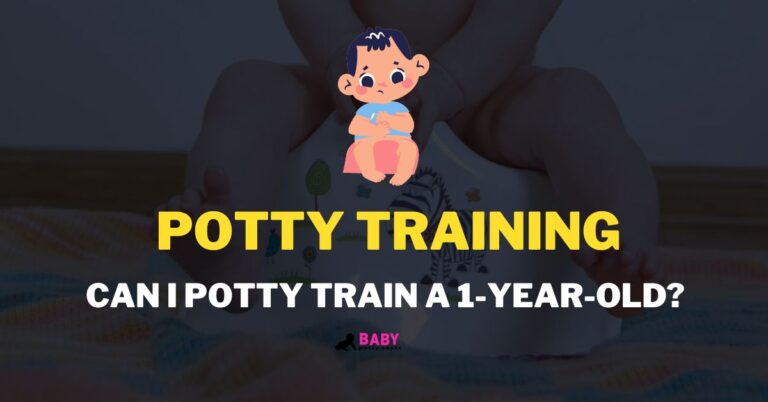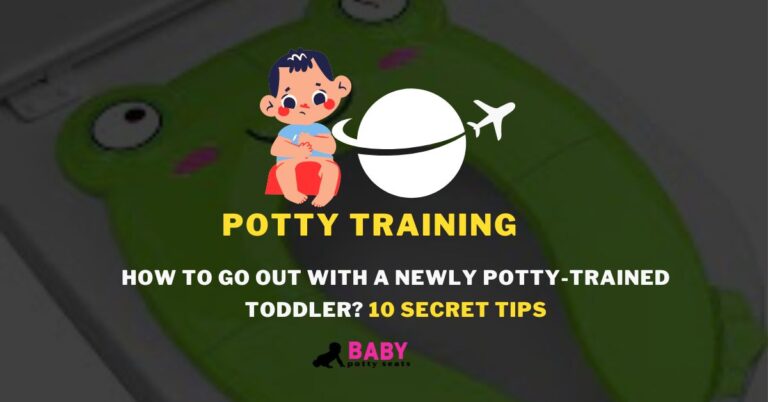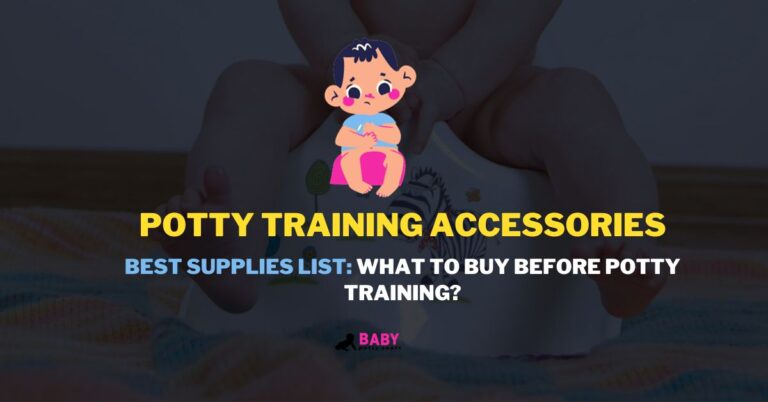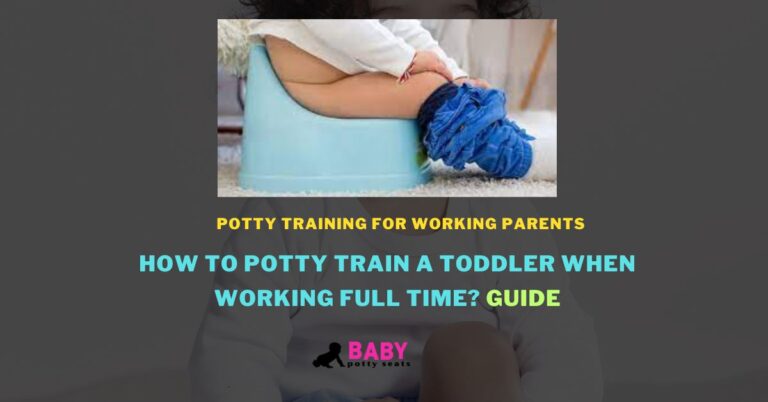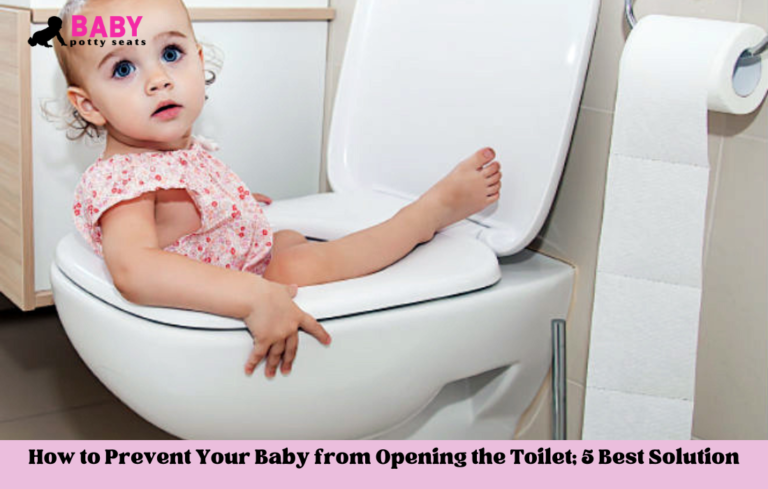Keeping your baby’s potty seat clean isn’t just a good idea—it’s essential for maintaining your child’s health, safety, and comfort.
Babies have very delicate skin, making them susceptible to irritation and infection. A clean potty seat not only helps prevent germs and bacteria. But it also encourages your little one to use it more comfortably during potty training.
In this comprehensive guide, we’ll cover every aspect of cleaning a baby potty seat, ensuring that it remains hygienic, safe, and welcoming for your little one.
Importance of Regularly Cleaning Your Baby’s Potty Seat
Regular cleaning of a baby potty seat is vital to prevent harmful bacteria buildup, odors, and stains.
Potty training is a significant milestone for every child, and maintaining cleanliness ensures your child feels comfortable and secure while using the potty.
Moreover, cleanliness helps prevent urinary tract infections and skin irritations caused by bacteria that thrive in unclean environments.
Essential Cleaning Supplies
Before you begin cleaning, it’s crucial to gather the necessary supplies. Having these on hand makes the process quicker, easier, and more effective.
- Mild soap or baby-safe detergent
- Warm water
- White vinegar (a natural disinfectant)
- Baking soda (an effective odor neutralizer)
- Soft cloth or sponge
- Disinfectant wipes (for quick clean-ups)
- Rubber gloves (optional, for personal protection and comfort)
Detailed Step-by-Step Cleaning Process
Here’s a detailed explanation of each step for how to clean the potty seat thoroughly and safely:
Step 1: Dispose of Waste Properly
Start by safely disposing of any waste from the potty seat into the toilet. Flushing immediately helps reduce odors and prevents lingering bacteria. If the potty seat is heavily soiled, use a small amount of toilet paper to remove any excess waste first.
Step 2: Initial Rinse
Rinse the potty seat thoroughly with warm water. This step helps remove any remaining particles or residue. Ensure you rinse every part of the seat, including hidden or hard-to-reach areas.
Step 3: Wash Thoroughly with Mild Soap
Next, use a soft cloth or sponge soaked in warm, soapy water to clean the potty seat. It’s best to use mild soap or baby-safe detergent to avoid irritating your child’s sensitive skin. Scrub gently but firmly, ensuring you reach all surfaces and edges.
Step 4: Natural Deep Cleaning with Vinegar and Baking Soda
Occasionally, a deeper cleaning is necessary to eliminate persistent odors and stains. Vinegar and baking soda are safe, natural cleaners ideal for this purpose. Mix equal parts white vinegar and warm water and pour this solution over the potty seat. Sprinkle baking soda lightly on top of the vinegar solution. This combination effectively disinfects the seat and neutralizes odors. Allow the solution to sit on the seat for about 10-15 minutes.
Step 5: Thorough Rinsing
After deep cleaning, rinse the potty seat thoroughly with warm water. This step ensures no residue remains from the soap, vinegar, or baking soda. Residue left on the potty seat could potentially irritate your baby’s skin, so rinsing carefully and thoroughly is crucial.
Step 6: Complete Drying
Use a soft, clean cloth to dry the potty seat completely. You may also leave it to air dry if you prefer. Ensuring the potty seat is completely dry before the next use prevents bacterial growth, keeping it hygienic and ready for your child.
Related Article: Which potty seat is best for a toddler | Enlist 6 Top
Maintaining cleanliness involves not just thorough cleaning sessions but also quick, daily maintenance. Here are some additional useful tips:
- Quick Daily Cleaning: After each use, quickly wipe the potty seat with disinfectant wipes or a soft cloth soaked in mild, soapy water. Regular wiping prevents bacteria buildup and reduces deep cleaning frequency.
- Regular Weekly Deep Cleaning: Follow the deep-cleaning process outlined above at least once a week. Regular deep cleans help maintain high hygiene standards and ensure the potty seat remains safe for use.
- Avoid Harsh Chemicals: Strong chemicals or harsh detergents can irritate your baby’s sensitive skin and cause discomfort. Always opt for mild, baby-friendly cleaning solutions whenever possible.
- Using Gloves: If you’re uncomfortable handling waste directly or prefer additional protection from cleaning agents, wear rubber gloves. Gloves provide added hygiene and comfort, especially during deep cleaning sessions.
- Inspect the Potty Seat Regularly: Regularly inspect the potty seat for any cracks or damage. Damaged potty seats can harbor bacteria and pose safety risks. Replace the potty seat if you notice significant wear and tear.
Troubleshooting Common Potty Seat Cleaning Issues
Persistent Odors: If odors persist after cleaning, soak the potty seat overnight in a vinegar and water solution. This method often effectively neutralizes stubborn smells.
Tough Stains: For tough stains, create a thick paste of baking soda and water. Apply this paste to stained areas, let it sit for 30 minutes, and then scrub gently. Rinse thoroughly afterward.
Mold or Mildew: Mold or mildew growth occurs if the potty seat remains damp frequently. To remove mold, scrub the affected area with vinegar, let it sit for several minutes, then rinse and dry thoroughly. Regular drying prevents mold from recurring.
Safety Considerations
Always ensure that all cleaning products are safely stored out of your child’s reach.
Even natural substances like vinegar and baking soda should be kept safely stored to prevent accidental ingestion.
Conclusion
Keeping your baby’s potty seat clean is not just beneficial—it’s essential. Cleanliness prevents infections, irritations, and discomfort, creating a safer and more pleasant potty-training experience. By following this comprehensive guide regularly, you’ll ensure your child’s potty seat remains clean, hygienic, and welcoming, paving the way for a smoother and more successful potty training journey.



